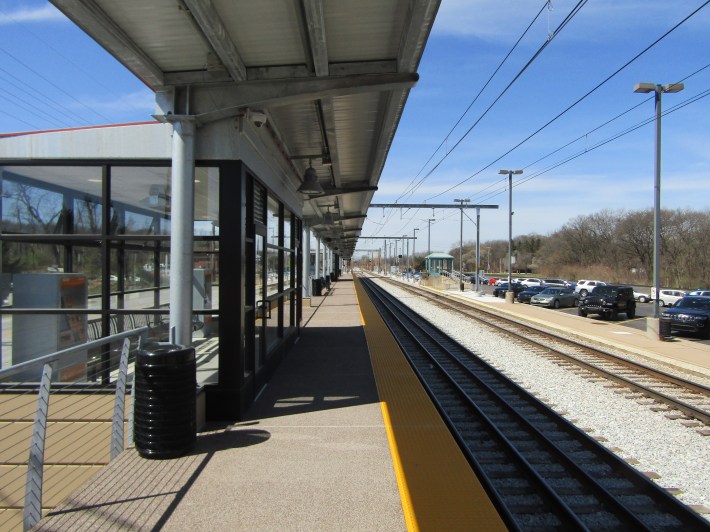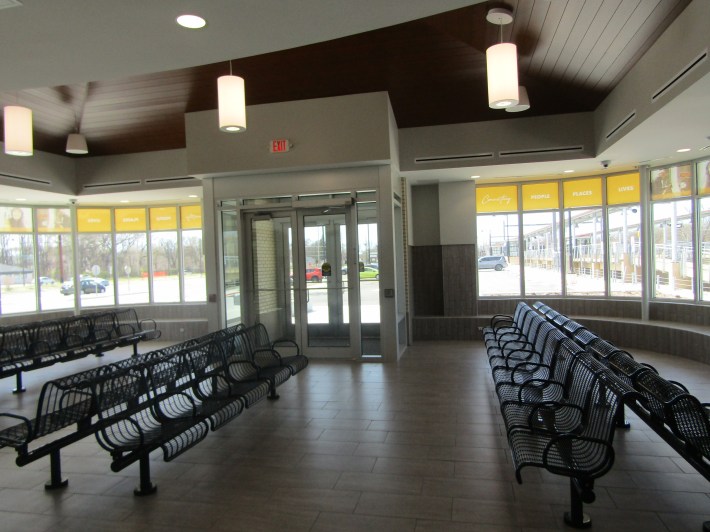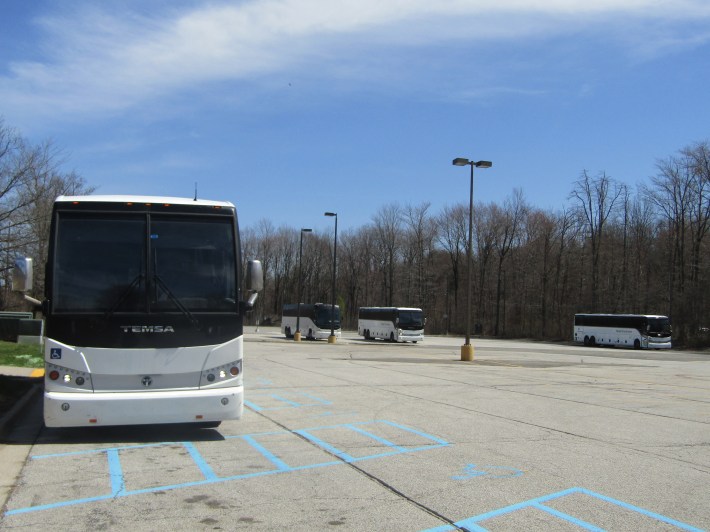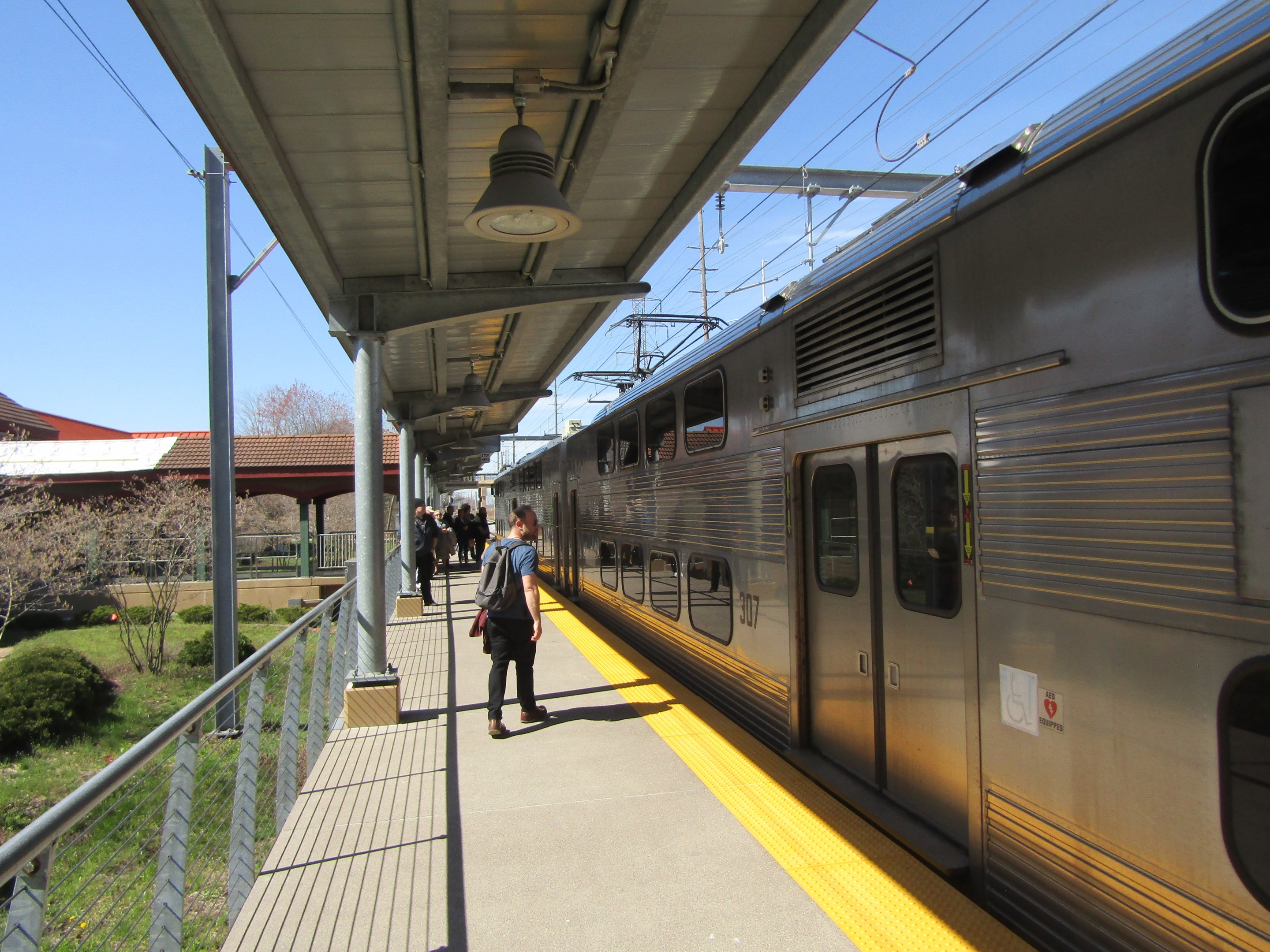
The shuttling nightmare was officially over for the South Shore Line riders on Tuesday, April 9. For more than two years, riders had to transfer to buses because the railroad was in the process of double-tracking the mostly single-track section of line between downtown Gary and Michigan City’s Carroll Avenue station. The South Shore Line website states the second set of tracks will increase service frequency, reduce delays and improve travel times.
Work was done in several sections. The section between Dune Park and Michigan City returned to service last October, but it took another five months for the Dune Park to downtown Gary stretch to be fully double-tracked.
Miller station, which serves Gary’s Miller Beach neighborhood, was rebuilt with a pair of high–level platforms and a new station house. The Portage/Ogden Dune station got a new high-level platform on the south side of the tracks, while the Dune Park station got a brand-new low-level platform north of the tracks.

South Shore Line executive director Michael Noland previously told Streetsblog that this “ground-level platform on one side, high-level platform on the other side” setup was created to accommodate the expected service pattern between Miller and Michigan City. The trains would stop at Track 1, and Track 2 platforms would serve as back-ups when Track 1 isn't available for reasons such as maintanace or freight train interference.
Other changes included expanded parking lots at all three stations, better marked and signaled crossings and some track realignment at the Miller station. The station now has a stub storage track, which would facilitate more Chicago-Miller service.
With double-tracking complete, South Shore Line expects to reduce travel times for all-stop trains up to 19 minutes, and run express trains between Michigan City and the Loop in 62 minutes. By comparison, the average travel time on that segment has historically been 90 minutes. The railroad is keeping the schedule the same for the time being, but announced that it will soon release a new schedule to take effect in May.
Streetsblog rode the newly restored segment on the first day of service. I took the first train out of Chicago to Dune Park and working my way backwards. While it was, indeed, a much smoother ride, none of the trains strictly followed the current schedule. Some arrived as much as 10 minutes early, while others arrived 5 to 6 minutes late. The riders I spoke with agreed that, if nothing else, they were happy that the construction was over.
The renovated stations
The Portage/Ogden Dunes station already had two tracks but, before the improvements, only had one, low-level platform with a small high-level section at the west end to accommodate riders with mobility devices. It had small wooden walkway-like platforms leading to Track 1, which were used by some rush-hour trains to pick up and discharge passengers.
South Shore Line kept the original Track 2 platform and just removed the shelters. The new Track 1 platform uses the standard design for the new South Shore Line high-level platforms, with a canopy roof, gauntlet tracks and several enclosed shelters with heat lamps and ticket machines. Crossings at both ends of the platform link it to the parking lot on the other side of the tracks, and there’s now a clearly marked street crossing with button-activated signal to make it safer for riders to cross to the new commuter parking lot south of Dunes Highway.
Miller station improvements are more elaborate. In addition to two high-level platforms at both tracks, it has a full-fledged station house that’s significantly larger than the old shelter. The building has a waiting room, restrooms and a (currently empty) concession and vending machine area. In an interesting touch, the ledge by the windows is wide enough that a person can comfortably sit and features multiple power outlets, providing a spot to plug in a laptop or a phone charger and hang around while the battery recharges. All and all, this is a significant investment in the station that the South Shore Line once considered shutting down.

The travel experience
Double-tracking construction ended without much fanfare. There were announcements on the station doors and shelter walls. As the first train out of Chicago approached Gary Metro Center, the crew made an onboard announcement that “If you’re going further east, stay on the train, as we’re no longer busing.”
The train stopped for a few minutes at Miller. At first, I thought it was a delay, but when I checked the schedule I realized that the train was actually six minutes early.
The pattern persisted until I disembarked at Dune Park. I noticed that the eastbound trains tended to arrive early while westbound trains tended to arrive late. The last westbound train I took arrived at Gary Metro Center almost 10 minutes early.
There were no signs at either Dune Park or Portage/Ogden Dunes explaining that most trains stop at Track 1. This confused one out-of-state rider, who wasn’t sure where he was supposed to catch the Chicago-bound train.
Confusion continued at Miller. The westbound train I rode stopped at Track 2. But when I went to catch the train to back to Chicago, it stopped at Track 1 and the conductor I talked to wondered where I got the idea the train would board anywhere else. To be clear, there were no signs, no announcements.
A similar issue came up when I first visited Beverly Shores post-double tracking. The next time I visited, the South Shore Line put up signs telling riders to assume that their train stops at Track 1 unless an announcement tells them otherwise. Perhaps the railroad will do something similar with the reopened stations over the next few weeks.
But these issues were minor to regular riders I interviewed at the Dune Park station.

Amanda, who declined to give her last name, said she was “just happy” to see the busing end. “We’ll see how it works out,” she added. “It’s nice. It’s been a while [since busing started].”
Donnie Kooy, who lives in Valparaiso and commutes to Chicago for work, agreed. “I’ve been taking the [shuttle] bus for two years, so I’m excited about it,” he said. “It's a lot less of a hassle.”
Mahir Mehmud, who lives in Valparaiso and attends Valparaiso University, said that “It’s a bit more convenient for Valpo people to go to Chicago, take just one train instead of taking a bunch of trains and buses.”
Valparaiso riders used to be able to take South Shore Connect, an express bus service operated by the City of Valparaiso V-Line, to Dune Park station. But the city indefinitely paused the service effective January 1 due to low ridership - something that it blamed on the pandemic and double-tracking disruptions.
Kooy said that he drives to Dune Park, so the route’s discontinuation didn’t affect him. But for Mehmud, the lack of a transit link means he must spend $40 a ride to take Uber to the station. That, he said, was the only thing that marred the return of the train service.
“But I’m glad it’s up and running,” he added.
Did you appreciate this post? Please consider making a tax-deductible donation to help Streetsblog Chicago keep publishing through 2025. Thank you.






